Entries in windpower wisconsin (1)
11/21/11 Fragmented farmfields in WeEnergies new wind project AND How do you UN-sign on the dotted line? Farmers want out of wind developer's contracts
The photos below were taken by Jim Bembinster. They show how farmfields have been fragmented by wind turbines and access roads in WeEnergie's Columbia County wind project. What they don't show is the compaction of the soil from heavy machinery. Compacted soil affects crop production. Contracts signed by farmers in this project gives WeEnergies the right to site the turbines as they see fit.
CLICK HERE To read about a farmer whose land was leased to WeEnergies for this project and what has happened to his life and his farm since then.
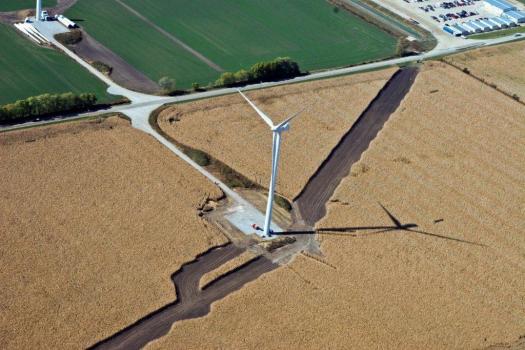
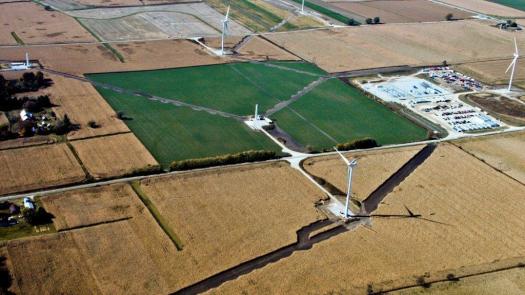
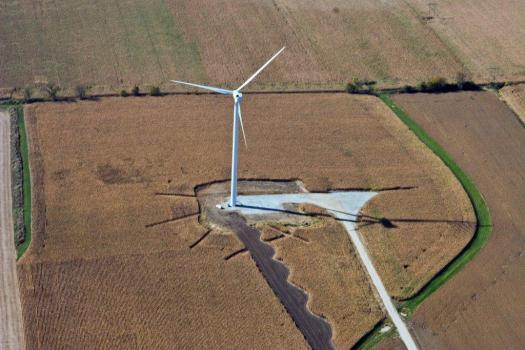
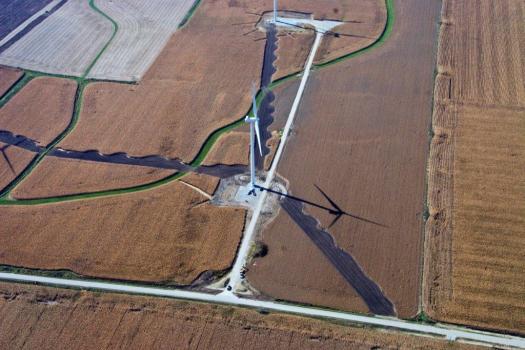
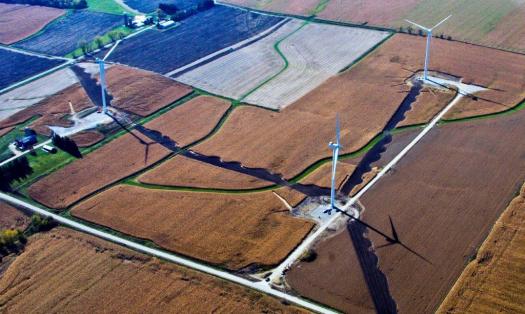
From Minnesota:
SEVERAL LOCAL LANDOWNERS WANT OUT OF WIND CONTRACT
By Regan Carstensen,
SOURCE The Republican Eagle, www.republican-eagle.com
November 21, 2011
“Those landowners a lot of times are making decisions based on what the wind folks are saying,” said Jaime Edwards of the Minnesota Department of Natural Resources. “If they had both sides of the story, they may not have signed the contracts.”
AWA Goodhue Wind has faced many battles in its journey toward getting a permit for a wind farm in Goodhue County, and another one is about to ensue.
A handful of participating landowners who agreed to be part of the 78-megawatt wind farm are now anxious to get out of their contracts and have sent what they call a letter of termination to AWA Goodhue.
AWA Goodhue officials declined to comment.
In addition to a long list of other reasons, the landowners — who asked not to be identified — said realizations about possible effects on the area’s wildlife caused them to want out of the project.
“Those landowners a lot of times are making decisions based on what the wind folks are saying,” said Jaime Edwards of the Minnesota Department of Natural Resources. “If they had both sides of the story, they may not have signed the contracts.”
Mary Hartman, a Rochester resident, has been monitoring the project footprint because she’s concerned about the area’s ecosystem and how it will be affected by more than 45 wind turbines.
Hartman has been in contact with some of the landowners who are looking to void their contracts, and she said she has been helping them see how she thinks a wind farm could be putting migratory birds — especially eagles — in harm’s way.
“The people who signed didn’t necessarily know that they had to be concerned about this,” Hartman said.
She said that the topography of land — including the rolling terrain and proximity to water — within the project footprint is ideal for eagles and allows them to soar on warm wind currents in the valleys. But Hartman is worried the construction of a wind farm might disrupt their usual flight paths.
“When they want to come out of the ridge, if they’re surrounded by wind turbines they’re going to get hit,” she explained.
DNR officials share Hartman’s concerns.
“It’s nice to try to use alternative energy, but we are right on the Mississippi Flyway,” Edwards said. “You really have to look hard at whether something like this should be placed on a flyway.”
Edwards also said that although the project has fewer than 50 turbines planned, once one moves in, she expects more are likely to follow.
“It’s the American way — if one wind turbine is good, then 200 must be better,” she explained. “But is it really?”
Edwards traveled out to and studied the project footprint in order to provide assessments of any potential impacts to the non-game wildlife there.
Hartman also has had her fair share of bird watching in Belle Creek Township, including a time she pointed out eagles’ nests to officials at Westwood Professional Services, a company that AWA Goodhue hired to assess the project’s impacts on the environment.
Westwood’s technical director of environmental services, Ron Peterson, compiled a report in June about observations he made with Hartman in May, and concluded there were many fewer eagles and nests in the area than she had seen.
He reported that of the 12 nests Hartman said she had previously observed, six did not exist, one was abandoned, one was new but in an uncharacteristic location, three had been previously recognized by Westwood and one was a duplicate reference to an already known nest.
During her most recent trip to Belle Creek Township on Wednesday, Hartman said she saw more than 15 bald eagles in the project footprint. And although the likelihood of seeing them is higher now that it is migration season, Edwards of the DNR said the eagles would be hard to miss at other times of the year as well.
“There’s no way that you cannot see eagles in that area. They were all over the place,” Edwards said of the numerous times she’s studied the area.
In addition to the research done by the DNR, U.S. Fish and Wildlife Service has done studies of the project footprint and made recommendations to AWA Goodhue on how to best avoid negative impacts to the birds.
USFWS can’t do much beyond those suggestions.
“We can’t bring enforcement against anybody until there’s a documented take of a migratory bird or an eagle,” Rich Davis of USFWS explained.
Davis said AWA Goodhue has not applied for an incidental take permit. Without the permit, the company could face a significant fine upon the death of an eagle from a wind turbine collision.
“If they are actually prosecuted for that and found guilty of the take from their project, they would not be eligible to pursue (an incidental take) permit in the future,” he said.
Any additional eagle deaths from wind turbines would result in more substantial fines, Davis said.